The arrival of autumn signals the end of summer but it doesn't mean that bright, colourful plants in the garden are at their end. By choosing your plants carefully, you can keep the succession of fresh, vibrant flowers and foliage going through to early winter. Whether you have a container garden or want to refresh your late summer borders, this selection of plants, chosen by plantswoman Marina Christopher, is sure to spark your interest.
Looking for the best September flowers?
Great plants for late-summer colour
Symphyotrichum 'Bee Lee Elliot'
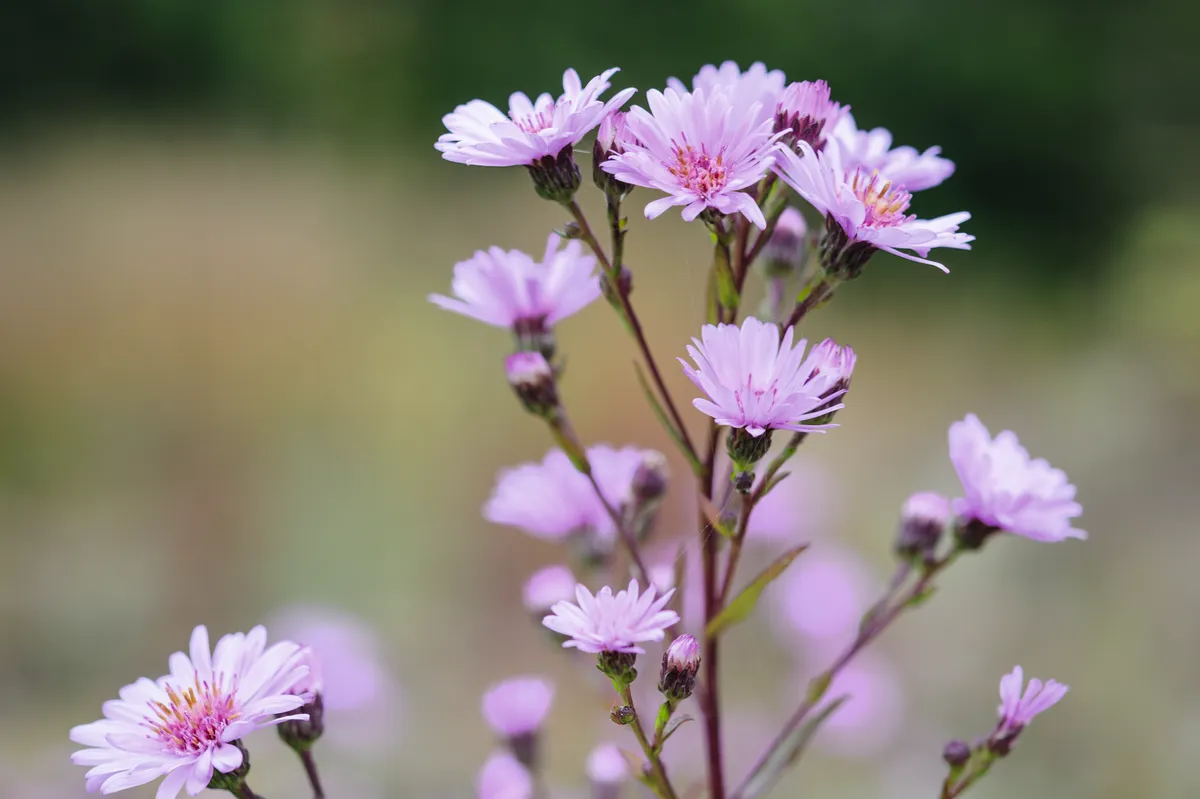
I obtained this delightful plant (formerly classified as an aster) from Mathieu Vermes’ nursery in France. It is mildew-free with a rather sparse, twiggy aspect and a profusion of small, lilac-purple flowers from tight buds. The dark stems add an interesting contrast to dark-green, slender foliage. Flowers open with a yellow central disc and once pollinated change to a dusky red. Bees can’t see red so once the blooms are pollinated, they ignore them so they don’t waste energy. How incredible is nature?
Height 75cm. Origin Raised by Mathieu Vermes in France. Growing conditions Most soils, not too dry; sun. Hardiness RHS H7. Season of interest Late summer – autumn.
Sanguisorba canadensis
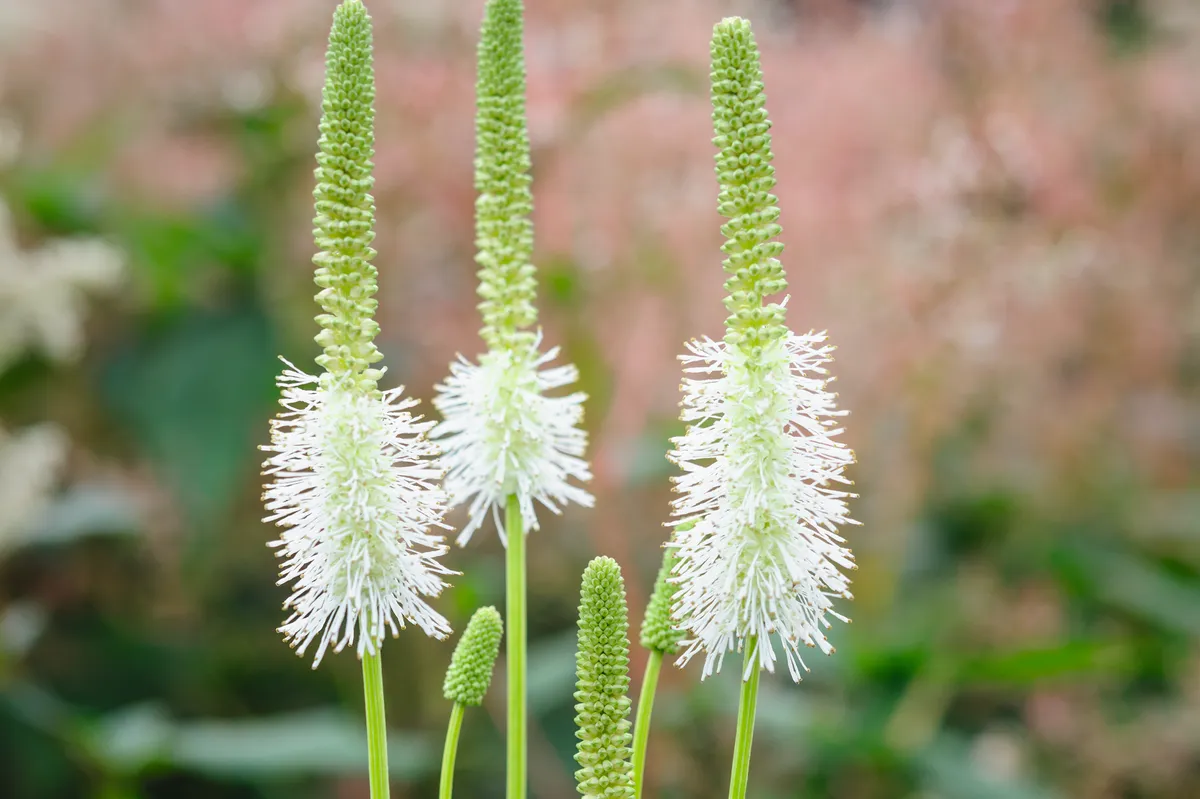
In the past few years burnets have rocketed in popularity with red, pink and white species and cultivars available. I’ve grown them for years and they are the most promiscuous plants I’ve ever known – hence the proliferation of named cultivars. An RHS trial of Sanguisorba in 2017 will help to assess the best for the garden, but this has already proved to be a fine species. It flowers in September with pristine, white candles emerging from erect, green flower spikes. It is wind pollinated and the slightest breeze sets the long stamens dancing.
Height 1.5-2m. Origin Eastern North America. Growing conditions Moisture-retentive soil; sun or dappled shade. Hardiness RHS H5, USDA 3a-8b. Season of interest Late summer – autumn.
Here's our plant profile on sanguisorba
Rudbeckia triloba 'Prairie Glow'
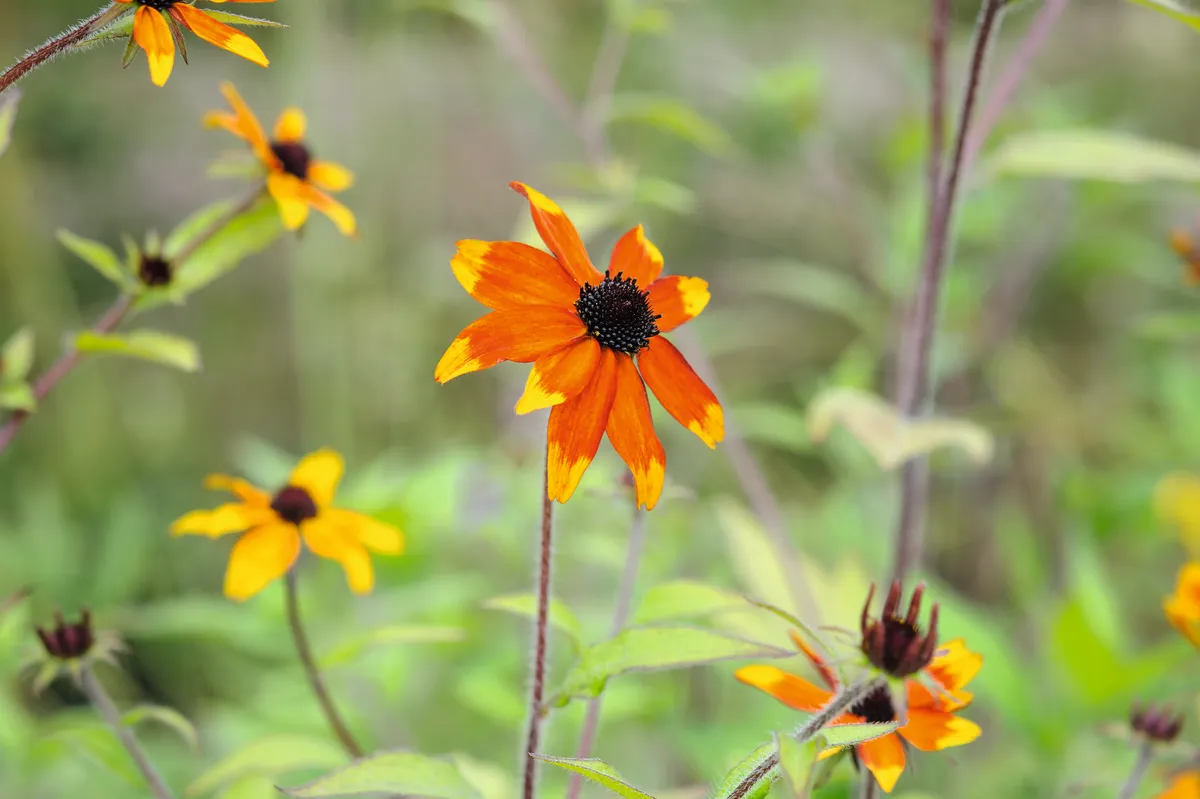
This delightful yellow daisy with a dark eye, colloquially named brown-eyed Susan, has smaller flowers than most rudbeckias but is tall with an airy, branched growth and multitudes of daisies in late summer. This seed strain, introduced in 2010, has striking dark-red stems and flowers that start off yellowish-orange with the orange and rusty hues deepening as the blooms mature and the temperature decreases. Mixes well with tall grasses, as they fade into their autumn finery, but is short-lived.
Height 1.5m. Origin Central-eastern USA. Growing conditions Moisture-retentive soil, not too dry. Hardiness RHS H7, USDA 3a-7b. Season of interest Late summer – autumn.
Don't miss our round up of orange plants for the garden
Abelia x grandiflora 'Lake Maggiore'

I’ve known and loved this beautiful arching shrub for several years but had never grown it until I moved to my current garden, which is in a frost pocket, meaning many of my plants flower a week or two later in the spring and again in the autumn as temperatures drop quite rapidly. This blooms through late August and into mid-October with delicately fragrant clusters of pale-pink tubular flowers with a contrasting dark-pink calyx.
Height 2m. Origin Hybrid of A. chinensis x A. uniflora. Raised in Italy. Growing conditions Moisture-retentive soil; sun or dappled shade. Hardiness RHS H5, USDA 5a-9b. Season of interest Spring – autumn.
Sedum 'Matrona'
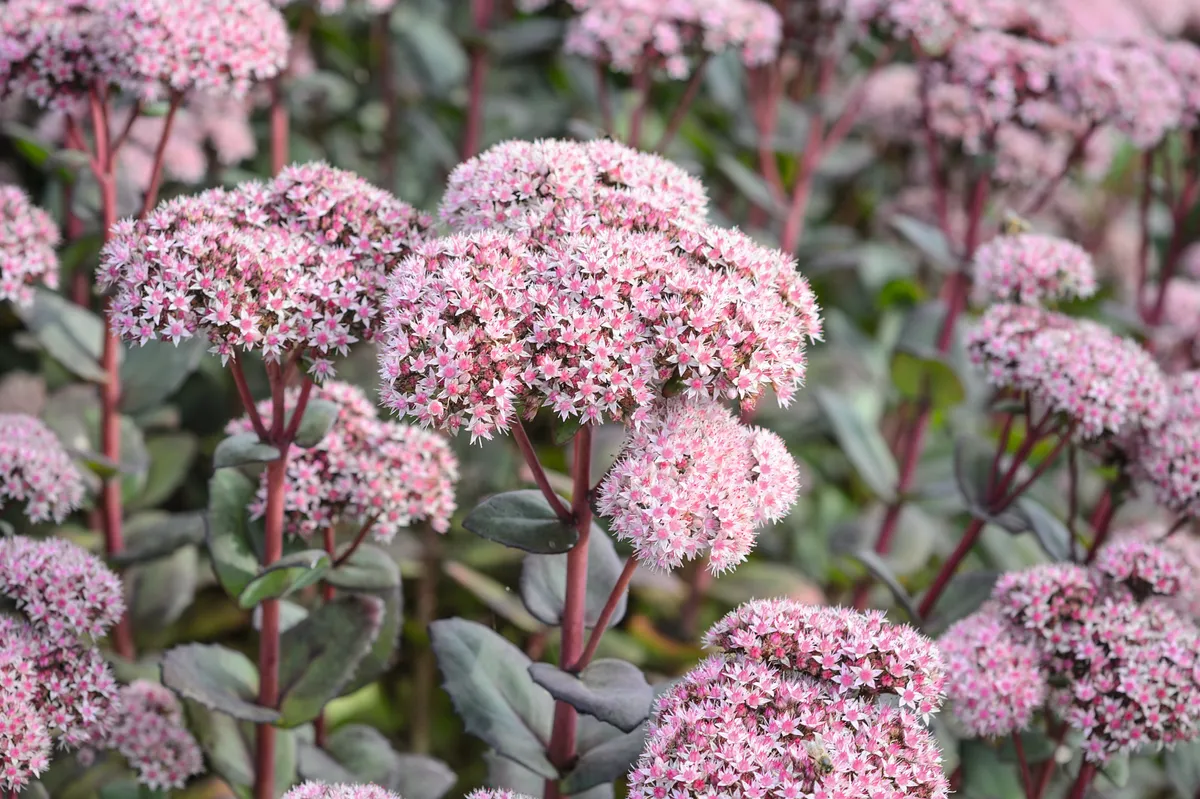
This is a robust border stonecrop with broad and rounded pinkish-green suffused leaves and an upright habit. Large flat plates of greenish-white-tipped pink buds open to rose-pink flowers in summer and persist well into autumn. Many mature border sedums have a tendency to open up, displaying a rather ugly bare centre but this cultivar usually remains as a tight clump so is a good choice as a border perennial. It is also very attractive to honey bees and can often be heard before it is seen, thanks to all the industrious insect activity.
Height 90cm. Origin Raised by Ewald Hügin in Freiburg, Germany. Growing conditions Well-drained soil; sun. Hardiness RHS H7, USDA 4a-8b. Season of interest Late spring – winter.
Thalictrum 'Splendide'
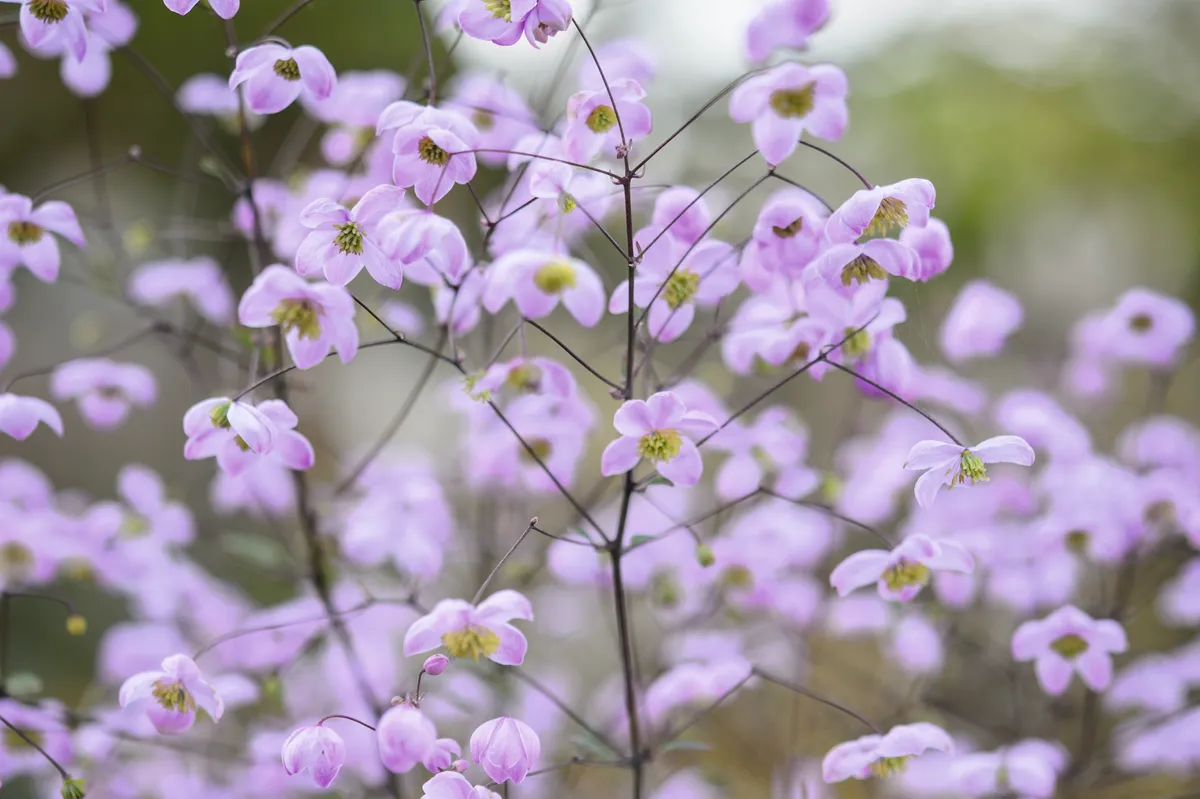
This lovely meadow rue is a recent introduction that appeared spontaneously in the garden of French nurseryman Thierry Delabroye. It is thought to be a hybrid between two Chinese species Thalictrum delavayi and Thalictrum elegans. As it is a sterile hybrid, it flowers for several weeks longer than either of its parents, providing vast clouds of small, purplish-pink flowers with creamy stamens that contrast with dark, reddish-purple stems. It can grow so tall and flower so profusely that it becomes top heavy and requires judicious staking to prevent it tumbling over into the border.
Height 1.2-1.8m. Origin Spontaneous seedling between Chinese species Thalictrum delavayi and Thalictrum elegans. Growing conditions Moisture-retentive soil; sun or dappled shade. Hardiness RHS H7, USDA 3a-8b. Season of interest Summer – autumn.
Don't miss our plant profile on thalictrum
Echinacea purpurea 'Fatal Attraction'
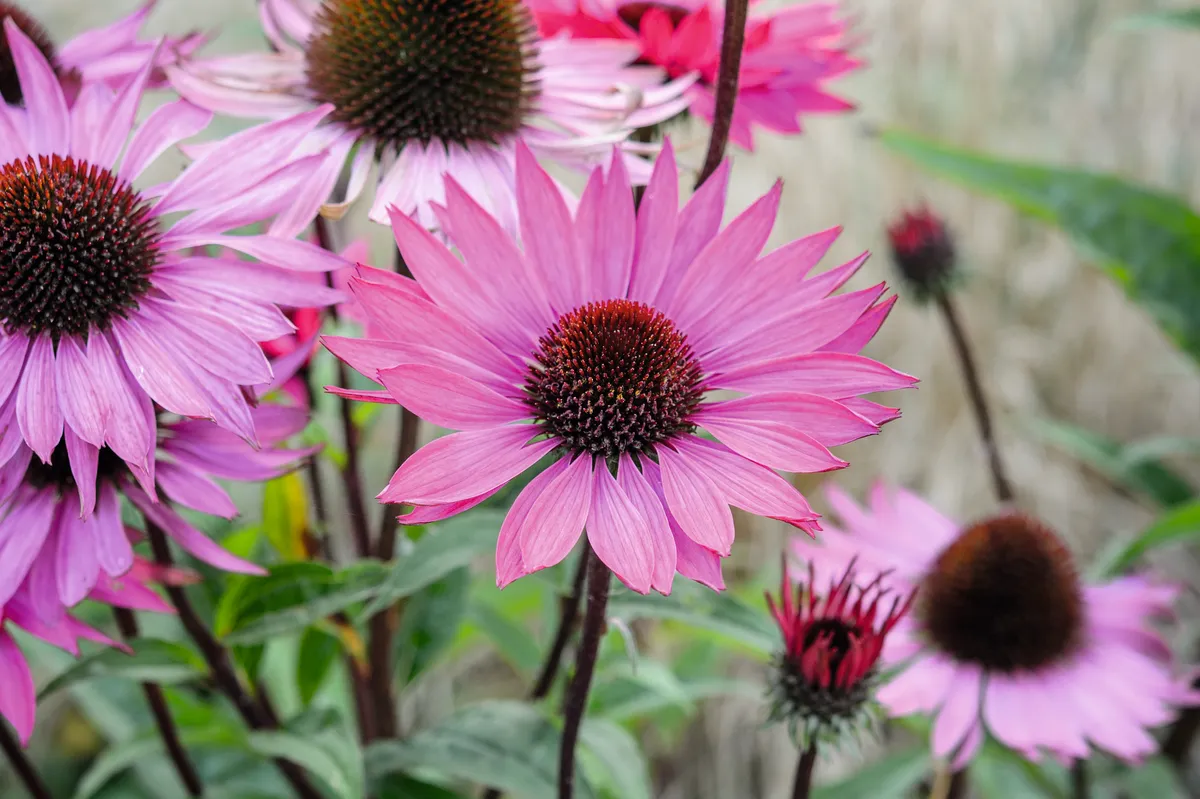
Many of the recently introduced hybrid echinaceas have proved very short-lived and need replacing on an almost annual basis. Echinaceas purpurea has always been a more reliable plant and this cultivar is an improvement on the type with dark-mahogany stems contrasting with deep pinkish-purple, daisy-like flowers with a dark cone and orange anthers. Coneflowers are very prone to the ravages of slugs and snails and do not like competition from other herbaceous plants. They do best isolated in large groups combining well with grasses.
Height 90cm. Origin Eastern USA. Growing conditions Well-drained soil; sun. Hardiness RHS H7, USDA 3a-9b. Season of interest Summer – late autumn.
Selinum wallichianum
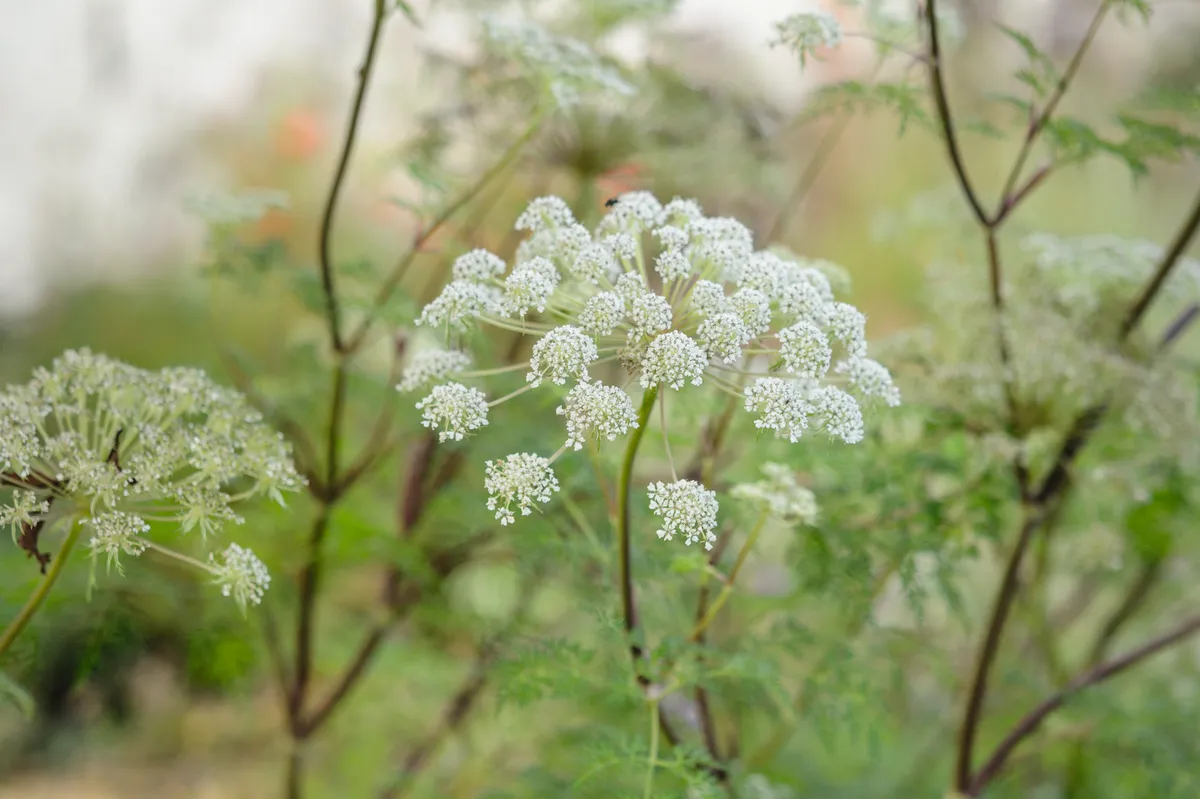
Umbellifers keep popping up in my repertoire of favourite plants as their foliage is a great foil for more flamboyant subjects. This white-flowered, cow-parsley relative, with dome-shaped umbels, distinct deep-red stems and very finely dissected pale-green ferny leaves, flowers in July and August providing a cool green and white backdrop to the colourful perennials of high summer. In autumn the architectural structure persists, giving an excellent template for spider’s webs and contrasting well with vertical shapes.
Height 1.5m. Origin Kashmir, Himalayas, India, Pakistan. Growing conditions Moisture-retentive soil; sun or dappled shade. Hardiness RHS H7, USDA 6b-10b. Season of interest Summer – late autumn.
Heliopsis helianthoides var. scabra 'Summer Nights'
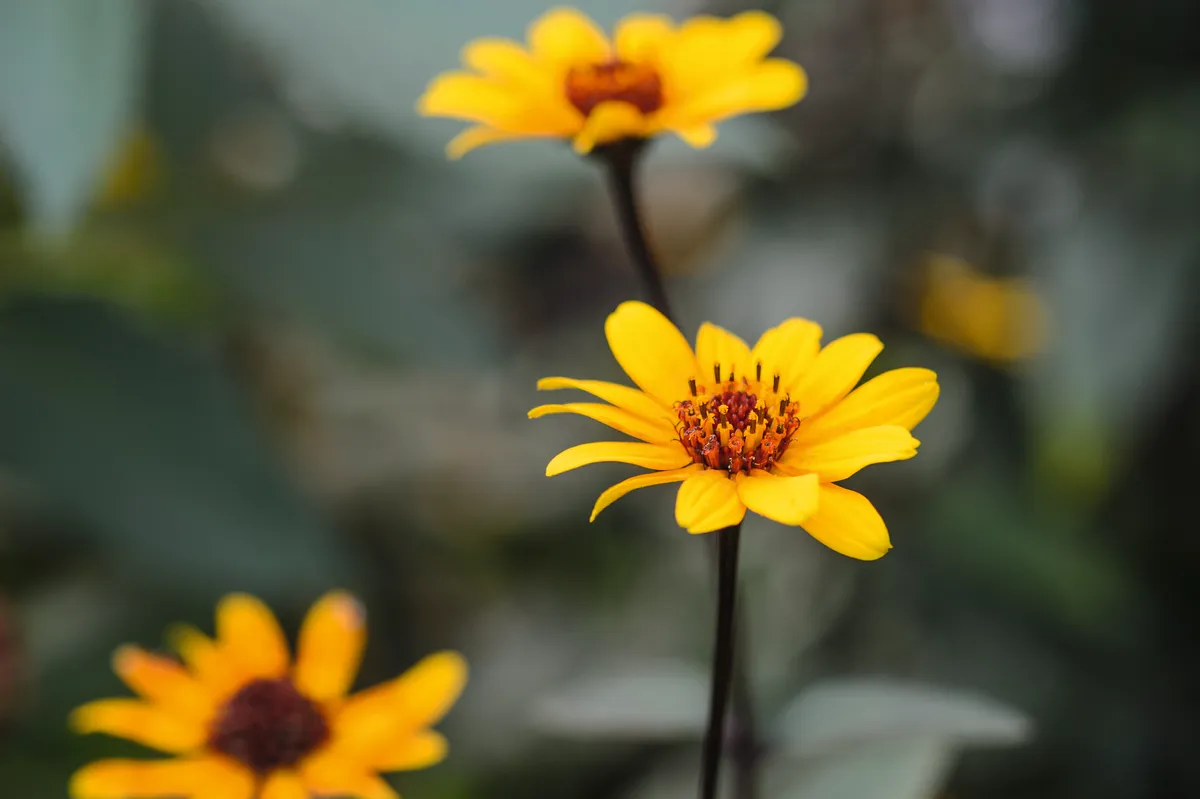
This cheerful yellow daisy is a close relative of the sunflower, Helianthus, but with much smaller flowers. It is a rather leggy plant with deep mahogany-red stems and dark-green leaves with deep-yellow blooms and a contrasting orange eye that turns dark red on pollination, a charming combination. Spring foliage is usually suffused purple-red so it has a long season of interest. Its main drawback is that it is caviar to slugs and snails, and on my clay soil it is often razed to the ground as soon as the shoots emerge.
Height 1.2m. Origin Raised by North Creek Nurseries, Pennsylvania, USA. Growing conditions Well-drained soil; sun. Hardiness RHS H7, USDA 4a-9b. Season of interest Late spring – autumn.
Miscanthus sinensis 'Rotfuchs'
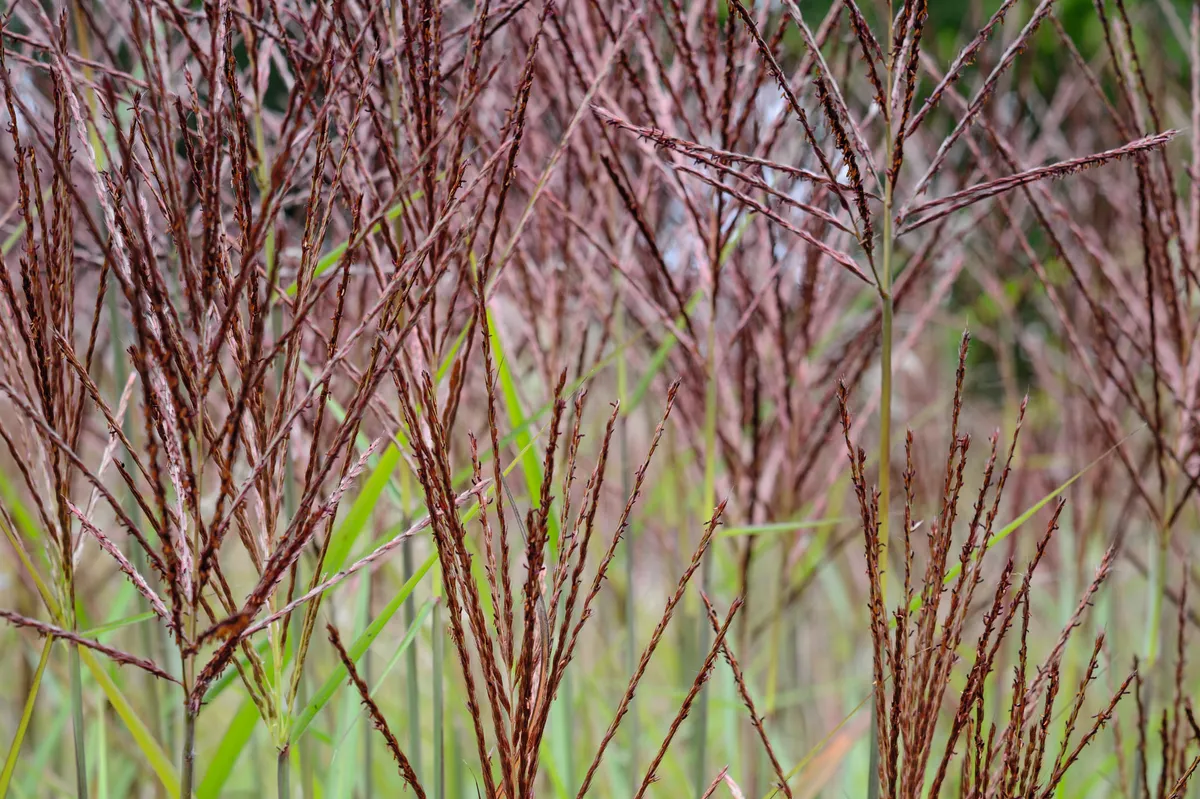
In a wet growing season many Miscanthus sinensis cultivars exhibit strong red and purple hues in the inflorescence, which can be almost buff in a dry season. This one will reliably produce strongly coloured, deep reddish-purple flowers with orange stamens whatever the weather. They contrast well with the more airy heads of other autumnal grasses, such as Panicum virgatum, Molinia caerulea and Calamagrostis x acutiflora. The flowers fade to browns and muted purple tones during the winter months.
Height 1.5m. Origin East Asia. Growing conditions Not fussy, but not bone dry. Hardiness RHS H6. Season of interest Summer – winter.
You can find more information on hardiness ratings here.